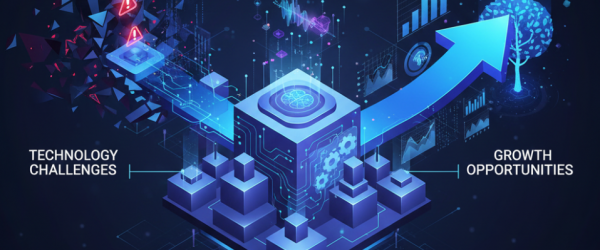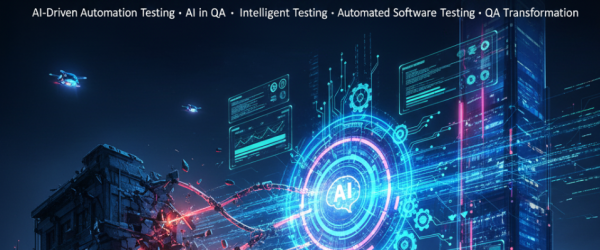Introduction
Organizations today face several interlocking issues:
- Too many dashboards, too few decisions – many teams generate reports for reporting’s sake, not to decide.
- Lag between insight and action – by the time analytics are reviewed, the moment may have passed.
- Inconsistent human judgment – different people make different calls based on the same data, increasing variability.
- Hidden data silos & latency – certain signals arrive late or aren’t integrated into decision models.
- Lack of feedback loops – decisions aren’t instrumented, so there’s no learning from success or failure.
These issues cause delay, waste, misalignment, and lost opportunity. That’s where AI steps in: as the agent of clarity.
How AI Converts Overload into Action
At a high level, AI in decision systems does three things:
- Signal extraction & prioritization – among hundreds of metrics or alerts, AI identifies high-value or anomalous signals.
- Decision modeling – converting signals into recommended actions (predictive or prescriptive models).
- Orchestration & execution – automating low-risk actions or presenting recommendations to human decision-makers, with feedback loops.
When layered with observability, traceability, and governance, this becomes a closed, evolving decision system rather than a static dashboard.
Key Statistics & Trends
- Use of generative AI surged from 33% to 71% in one year across surveyed organizations (2023 → 2024) (McKinsey).
- In 2024, 74% of companies still struggle to scale measurable value from AI deployments (BCG).
- AI’s role in decision-making is growing: in many organizations, 50% now use AI in decision workflows (InData Labs).
- Academic research shows that AI recommendations help people make better decisions in many contexts – but blind deference to AI can harm outcomes (Ben-Michael et al., 2024).
These statistics show both the opportunity and the caution: AI is powerful, but value depends on integration, governance, and human collaboration.
Architecture & Framework: From Overload to Decision
A robust decision system built on AI typically includes these layers:
| Layer | Role / Function |
| Data & Ingestion | Collect diverse data streams (events, logs, telemetry) with low latency |
| Feature Engineering | Transform raw data into features or signals for modeling |
| Decision Models & Rules | Predictive & prescriptive models + rule logic to derive candidate actions |
| Workflow engine, APIs, and agent controllers to carry out actions | Track decisions, outcomes, and drift; feed results back into model training |
| Monitoring, Feedback & Retraining | Track decisions, outcomes, drift; feed results back into model training |
| Governance / Audit | Logging, traceability, human override paths, policy constraints |
Sample Use Cases
| Domain | Use Case | Benefit |
| Customer Engagement | Next-best offers, churn interception | Increase retention, revenue lift |
| Fraud Detection | Flag anomalies or false positives/auto-block | Reduce losses, improve trust |
| Supply Chain / Inventory | Predict stockout risks, reorder triggers | Optimize inventory levels, reduce waste |
| IT / Ops | Auto-healing infrastructure, anomaly detection | Improve uptime, reduce manual toil |
| Finance / Credit | Credit scoring, risk modeling | Faster approvals, lower default rates |
Metrics & KPIs: Measuring Clarity
When moving from overload to decision, measure both technical and business metrics:
| KPI Category | Example Metric | Why It Matters |
| Decision Accuracy | Precision, recall, F1 | gauges model correctness |
| Business Impact | Lift (e.g. revenue, cost saved) | ties decisions to outcomes |
| Latency / Speed | Time-to-decision | How fast decisions happen |
| Automation Success Rate | % of actions executed safely | tracks reliability |
| Audit & Traceability | % decisions logged with metadata | ensures accountability |
Best Practices & Pitfalls
Best Practices:
- Begin with high-frequency, high-impact decisions (where you’ll get ROI fastest).
- Always instrument outcomes and run A/B or canary tests.
- Build human-in-loop oversight for high-risk decisions.
- Monitor drift and retrain continuously.
- Focus more on people & process than just models.
Common Pitfalls:
- Automating without governance leads to unchecked errors.
- Presenting predictions without explanation reduces trust.
- Overfitting or model fragility in dynamic environments.
- One-off dashboards that never evolve into systems.
- Ignoring human-AI collaboration dynamics.
Conclusion
Going from data overload to clear decisions is not about collecting more data — it’s about designing decision systems with AI that sift signals, recommend actions, and learn through feedback.
But success depends on more than technology. It requires governance, human-AI collaboration, instrumentation, and a disciplined roadmap.
If your organization feels buried under dashboards, it’s time to architect for clarity — turning data into confident decisions.







